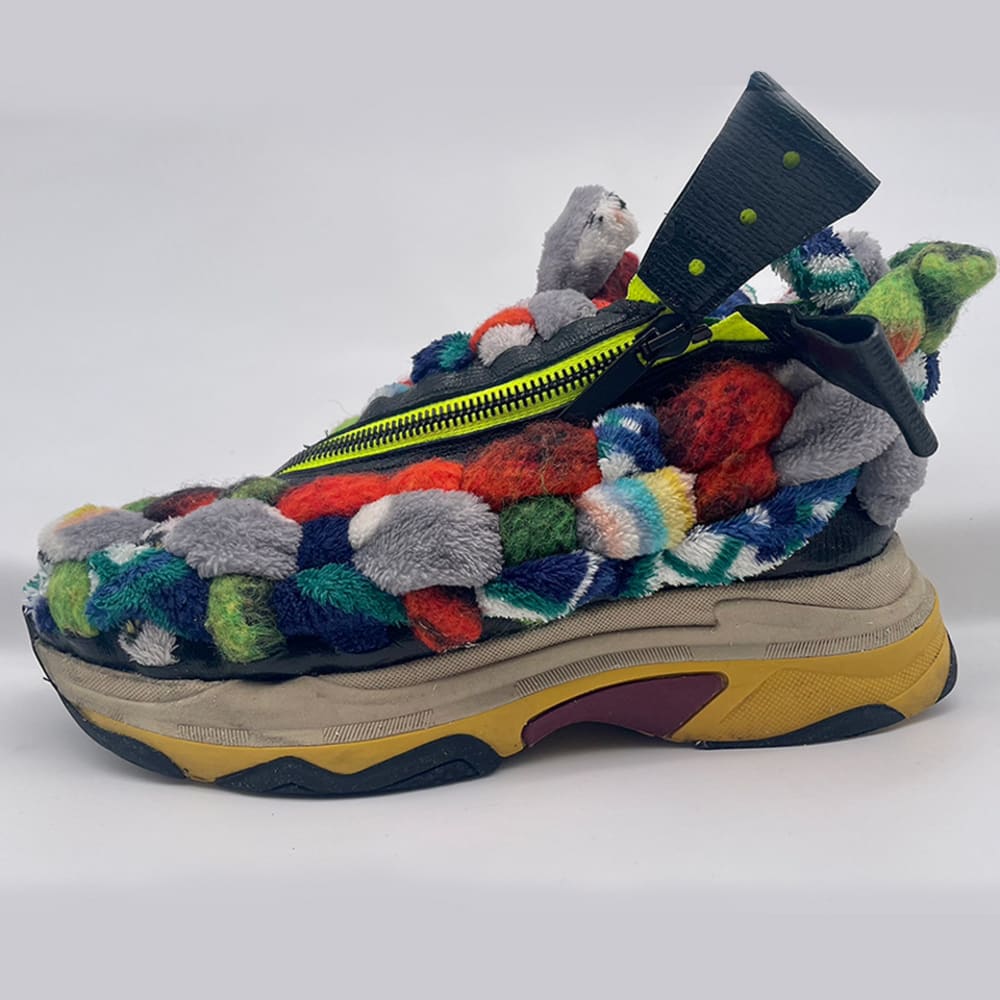Since 2015, Joyce Addai-Davis has chosen to exclusively wear self-made or upcycled clothing to address her concerns about the negative environmental effects of fast fashion. Throughout her MA studies at the Royal College of Art, her focus was on reclaiming discarded materials and creating purposeful fashion without using new resources. Her research delved into demodulation, consumer behaviour analysis, and digital design, all with the goal of combating the harmful practice of waste colonialism.
Taking inspiration from the Ghanaian warrior Yaa Asantewaa, Joyce aims to transform waste into something beautiful and desirable. Simultaneously, she aims to raise awareness about the issue of waste from the Global North being dumped in developing countries in the Global South, particularly in landfills. By pursuing her work in fashion, Joyce hopes to shed light on this problem and encourage a shift in consumer attitudes towards waste and sustainability.
The phrase "Chronicles of a Bola (Waste) Girl" refers to a concept that encapsulates Joyce's journey, experiences, and documentation related to her work with waste and fashion. The content revolves around the narrative of a girl specifically focused on waste-related matters. This title serves as a platform to showcase her efforts, insights, and challenges encountered throughout her sustainable fashion endeavours.
In the Twi language, a language originating from Ghana "Bola" means "Rubbish/Waste," while in the Yoruba language, a language originating from Nigeria, “Bola” means "Bring home wealth." The paradox between these two contrasting meanings holds significant power within Joyce's work, highlighting the complex relationship between waste, value, and cultural perspectives.





